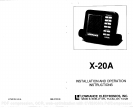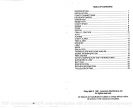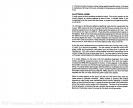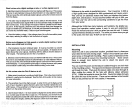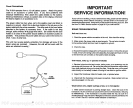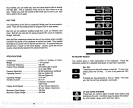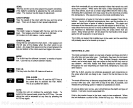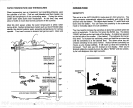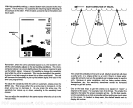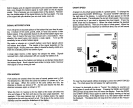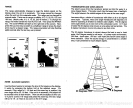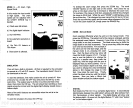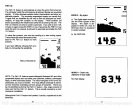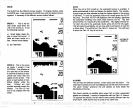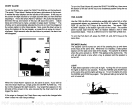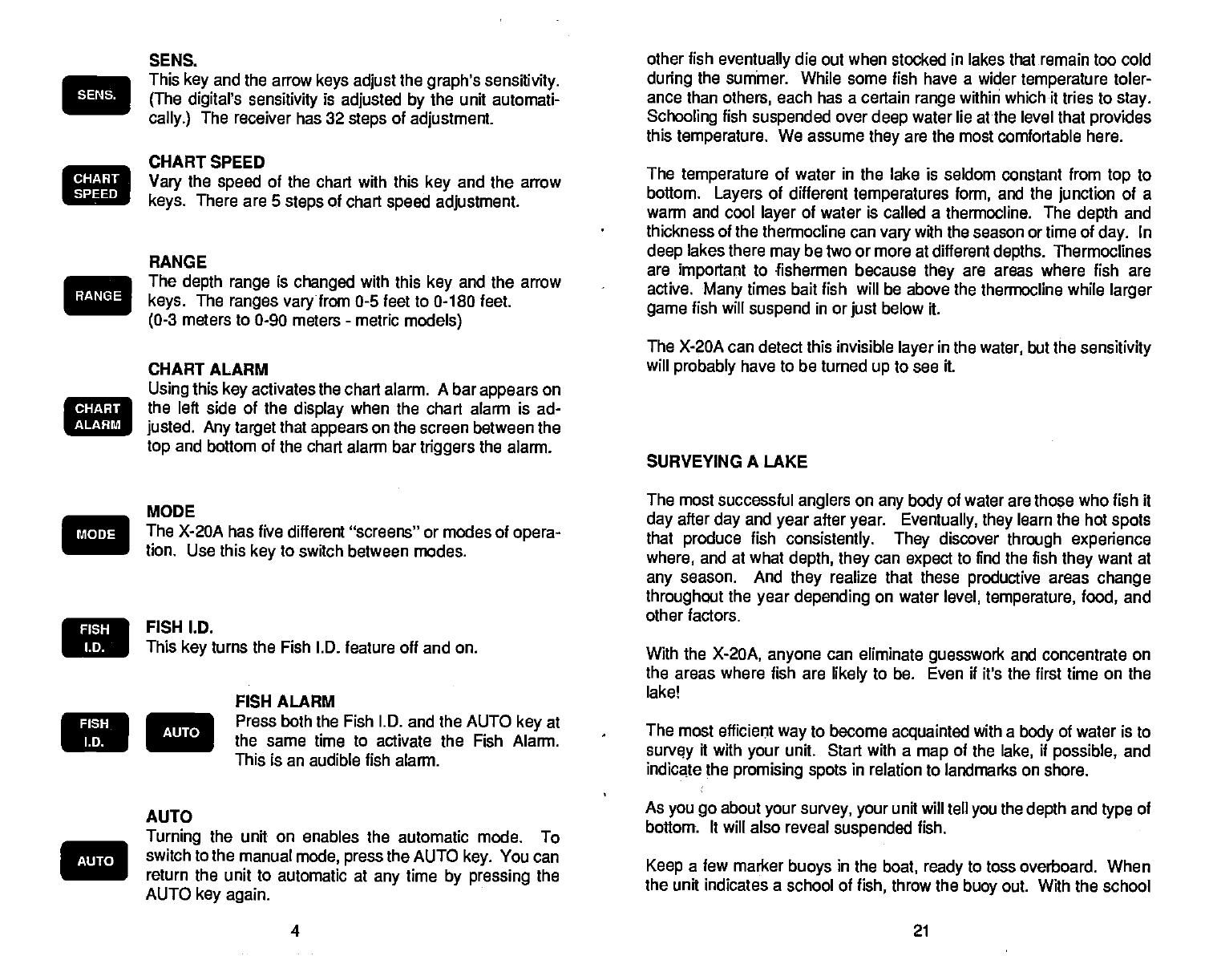
SENS.
This
key
and the arrow
keys adjust
the
graph's sensitivity.
-1
(The digital's sensitivity
is
adjusted
by
the unit automati-
cally.)
The receiver has 32
steps
of
adjustment.
______
CHART SPEED
IUIi'I
Vary
the
speed
of the chart with this
key
and the arrow
-
keys.
There are 5
steps
of chart
speed adjustment,
______
MODE
.Ip
The X-20A has five different "screens" or modes of
opera-
tion.
Use this
key
to switch between modes.
FISH l.D.
•
This
key
turns the Fish 1.0. feature off and on.
FISH ALARM
Press both the Fish 1.0. and the AUTO
key
at
"'
the same time
to
activate the Fish Alarm.
This is an audible fish alarm.
AUTO
________
Turning
the unit on enables the automatic mode.
To
switch to the manual
mode,
press
the AUTO
key.
You can
return the unit to automatic at
any
time
by pressing
the
AUTO
key again.
other fish
eventually
die out when stocked in lakes that remain too cold
during
the
summer. While some fish have a wider
temperature
toler-
ance than
others,
each has a certain
range
within which it tries to
stay.
Schooling
fish
suspended
over
deep
water lie atthe level that
provides
this
temperature.
We assume
they
are the most comfortable here.
The
temperature
of water in the lake is seldom
constant from
top
to
bottom.
Layers
of different
temperatures form,
and the
junction
of
a
warm and cool
layer
of water is called a thermocline. The
depth
and
thickness of the thermocline can
vary
with the season or time of
day.
In
deep
lakes there
may
be two or more at different
depths.
Thermoclines
are
important
to fishermen because
they
are areas where fish are
active.
Many
times bait fish will be above the thermocline while
larger
game
fish
will
suspend
in or
just
below it.
The X-20A can detect this invisible
layer
in the
water,
but the
sensitivity
will
probably
have to be turned
up
to see it.
SURVEYING A LAKE
The most successful
anglers
on
any body
of water are those who fish it
day
after
day
and
year
after
year.
Eventually, they
learn the hot
spots
that
produce
fish
consistently. They
discover
through experience
where,
and at what
depth, they
can
expect
to find the fish
they
want at
any
season. And
they
realize
that
these
productive
areas
change
throughout
the
year depending
on
water
level, temperature, food,
and
other factors.
With the
X-20A,
anyone
can
eliminate
guesswork
and concentrate on
the areas where fish are
likely
to be. Even if it's the first time on
the
lake!
The most efficient
way
to become
acquainted
with a
body
of water is to
survQy
it with
your
unit. Start with
a
map
of the
lake,
if
possible,
and
indicate
the
promising spots
in relation to landmarks on shore.
As
you go
about
your survey, your
unit
will
tell
you
the
depth
and
type
of
bottom. It will also reveal
suspended
fish.
Keep
a few marker
buoys
in
the
boat,
ready
to toss overboard. When
the unit indicates a school of
fish,
throw the
buoy
out. With the school
4 21
RANGE
The
depth range
is
changed
with
this
key
and the arrow
•;hUtIa
keys.
The
ranges varyfrom
0-5 feet to 0-180 feet.
(0-3
meters to 0-90 meters
-
metric
models)
CHART ALARM
Using
this
key
activates the chart alarm. A bar
appears
on
the left side of the
display
when the chart alarm is ad-
justed.
Any target
that
appears
on the screen between the
top
and bottom of the chart alarm bar
triggers
the alarm.
PDF compression, OCR, web-optimization with CVISION's PdfCompressor



